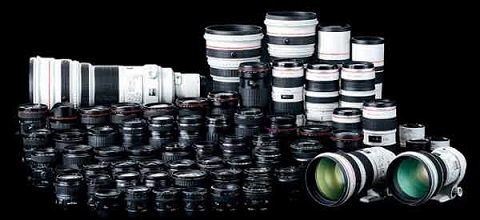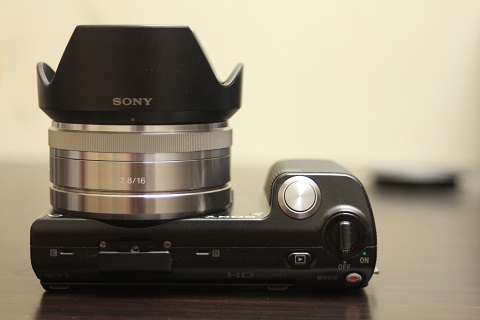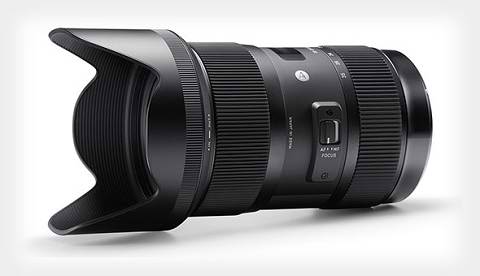Just when you thought you’ve seen it all, think again. In this segment, we’ve ranked the five most outrageously sized, non-military lens in the face of the earth. Warning: Lens-envy imminent.
In the world of photography, a lens’ size isn’t always everything. As a matter of fact, there’s no need for a lens to be any bigger than it has to be. However, in order to achieve greater reach, while maintaining a relatively fast aperture, manufacturers are left with no choice but to make their products bigger and heavier as is the case for the lenses on this list.
5. Canon EF 1200mm f/5.6L USM – the first on our list is this 1200mm prime lens from Canon. It’s the second lightest among the bunch, tipping the scale at only 36.37lbs. I made it sound like this bad boy’s a paper weight, but I bet you’ll agree with me once you see the other three bazookas that made our list.

Canon didn’t disclose how many of these lenses were made and sold, but it’s been rumored that there are only more or less 20 units in existence. This lens was first released two decades ago with an MSRP of $89,579. However, because of its rarity, the price of the lens inevitably went up with the most recent one sold for $120,000 at B&H Photo Video in New York City.
Focal Length: 1200mm
Aperture range: f/5.6 to f/32
Construction: 10 groups / 13 elements
Diaphragm blades: 9
Minimum focusing distance: 14 meters/45.9”
4. Sigma 200-500mm f/2.8 APO EX DG – Sigma wasn’t joking one bit when they tagged this monster “NO OTHER LENS LIKE IT”. That tag line couldn’t have said it any better as it currently holds the title as the fastest 500mm lens in the world.

Of course, in order to achieve such feat while maintaining the highest possible image quality, Sigma had to make some adjustments on the lens’ body, resulting to a behemoth lens that’s both compatible with full-frame and APS-C cameras. Give it a military-inspired paint job and you have yourself a lens that’s worthy of the term BAZOOKA.
Oddly enough, this lens is the lightest among the pack, weighing marginally lighter (34.6lbs) than the one above it. Although its $32,000 price tag is not something that’s within reach for most of us, it’s actually quite a steal particularly to those who are into wildlife and sports photography.
Focal Range: 200-500mm
Aperture range: f/2.8 to f/22
Construction: 13 groups / 17 elements
Diaphragm blades: 9
Minimum focusing distance: 78.7-196.9”
3. Leica APO-Telyt-R 1600mm f/5.6 – It’s no secret that Leica brand has been synonymous to quality and premium price. These two traits couldn’t be any more evident in this $2M lens which was custom-built for Sheikh Saud Bin Mohammed Al-Thani, the former minister of Culture, Arts and Heritage of Qatar.

This 132-pound camera sports a bayonet-type mount that snugs perfectly into a Leica R-series camera. Because of its sheer size and weight, shooting with this lens requires a durable tripod. And as rumor would have it, Sheikh Al-Thani customized a 4-wheel drive Mercedes-Benz and turned it into a mobile tripod for his two-million-dollar lens. Talk about fancy, eh?
Focal Range: 1600mm
Aperture range: f/5.6 to — (unspecified)
Construction: Unspecified
Diaphragm blades: Unspecified
Minimum focusing distance: Unspecified
2. Zeiss APO Sonnar T* 1700mm f/4 – The term bazooka is often used to describe a humongous lens. However, coining this optics as a bazooka is an understatement as it’s more like a Torpedo than a missile-firing-weapon.

Much like the lens before it, the APO Sonnar T 1700mm f/4 is commissioned by one hella rich customer who has a particular taste for long-distance wildlife photography. The name of the person who bought this gigantic lens was never disclosed, nor the price he/she paid to acquire it. However, it’s been speculated that the wealthy photography aficionado also hailed from Qatar as suggested by the Arabic markings and the State of Qatar emblem on the side of the lens.
Focal Range: 1700mm
Aperture range: f/4 to — (unspecified)
Construction: 13 groups / 15 elements
Diaphragm blades: Unspecified
Minimum focusing distance: Unspecified
1. Canon 5200mm f/14 – from Bazooka, to missile, now a Cannon Canon. Rounding up our list is the granddaddy of all prime telephoto lenses – the Canon 5200mm f/14 lens – which holds the title as the world’s largest SLR lens.

A combination of glass and lens, this massive lens’ aperture is controlled not by turning a dial or pulling down a lever, but by inserting an ND filter near the rear element. And with a reach that’s approximately a tenth of what the Hubble Space Telescope’s capability, this lens is constructed to zero in on a subject as far as 52 kilometers away.
That is, of course, if you’ve mounted a full-frame camera to it. However, if a dSLR camera with a cropped sensor was attached to it, say Canon EOS 7D, the lens should give you an eye-popping 8,320mm reach.
Here’s the Canon 5200mm f/14 in action:
It’s believed that only three of these Titans were ever built. One of those was posted on eBay a while back with a forty-five grand asking price. Given the rarity of the lens, I’d assume that some rich shutterbug would take it in a heartbeat, but it seems that Sheikh Al-Thani and the other guy who owns the lens #2 (which is probably the same guy) were not into Canon.
Focal Range: 5200mm
Aperture range: f/14 to – f/32
Construction: Not specified
Diaphragm blades: Unspecified
Minimum focusing distance: 4716”
Image Credit 1,
Image Credit 2, Image Credit 3, Image Credit 4
The post 5 Biggest Lenses Ever Built appeared first on YugaTech | Philippines, Tech News & Reviews.





